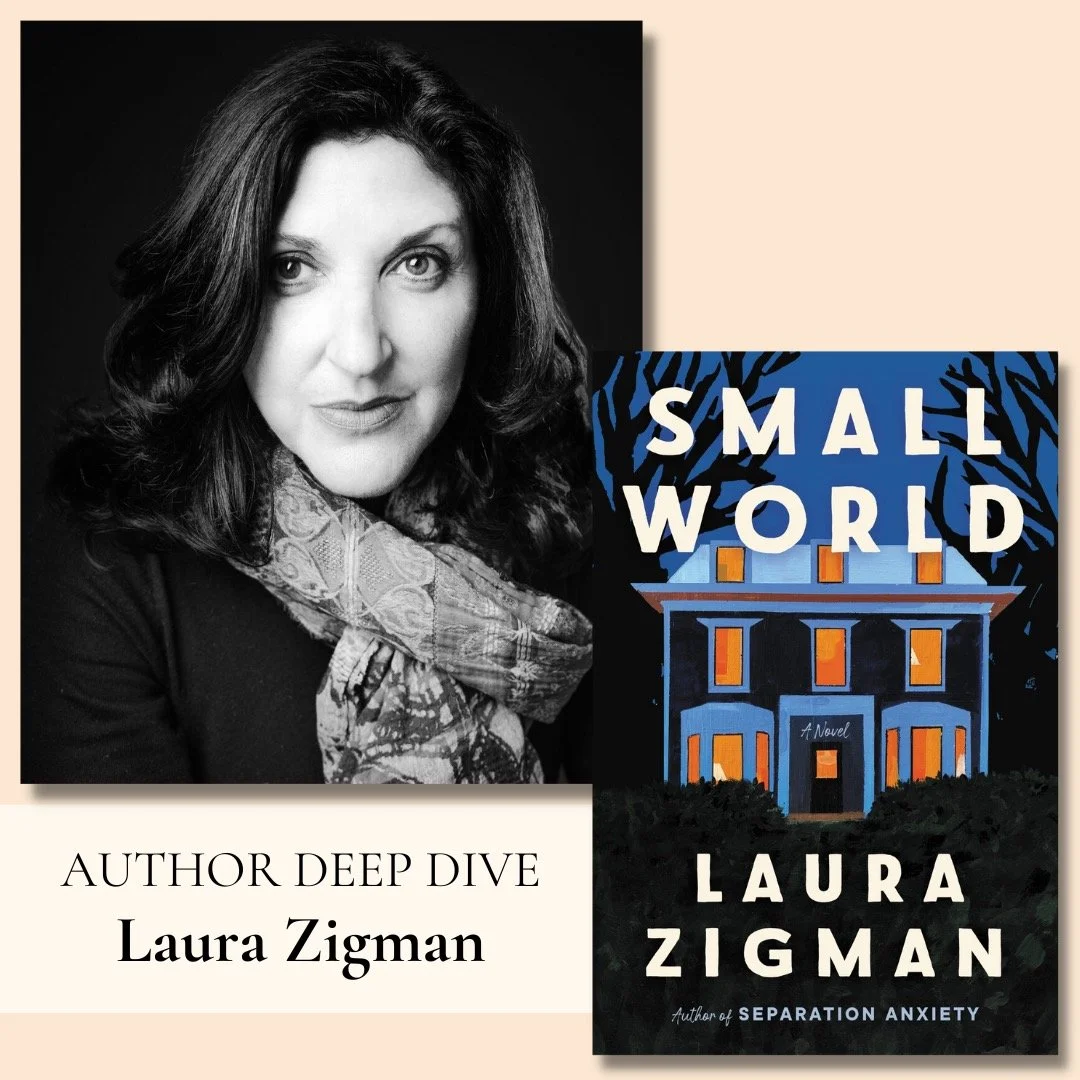Author Deep Dive: Laura Zigman
Laura Zigman’s fifth novel, Small World, released earlier this month! Small World is tender yet funny novel about two newly divorced sisters who move back in together as adults and finally confront a tragedy of their past—the death of their disabled sister.
We love this book and were thrilled to interview Laura about her personal connection to the novel, her relationship with her own sister, and what she’s working on next.
Be sure to listen to Zibby’s interview with Laura here!
Your newest novel, Small World, is about two sisters who move in together as adults and come to terms with how their other sister’s death shaped their childhood and their family. Can you share a bit of your own family history and how it inspired this book?
I came from a family that had lost a child. I was 3 and my older sister Linda was 5 when Sheryl, who was born first, died when she was 7. She’d been born with a very rare bone disease and had been institutionalized from the time she was about 2.
When did you decide it was time to tell this story? Was it something you had always wanted to explore or was there a specific moment of inspiration?
I think most of us have a story about ourselves that we feel compelled to tell because we think it will explain a fundamental part of who we are, and that people will understand us—and that we will understand ourselves better—if we tell that story. This was that story for me. I’d always wanted to better understand and explain who I was—to myself and to others.
How was the experience of writing this book, drawn from your own family’s experience, different from writing your previous novels? Did you find it emotionally difficult to write?
I’d always thought I would try to write about this subject in a memoir, but I tried for a while and realized, after fewer than 100 pages, that I really didn’t have enough of a story for a memoir. Growing up in the shadows of my dead sister, of my parents grieving, seemed very static; exploring it in fiction was the perfect way for me to do it because I could change the facts of the story in the novel and widen the lens. I may have changed and added certain things to make it a more interesting story to tell in a novel (for instance, in Small World, Eleanor, the disabled sister, lives at home for 9 of her 10 years, unlike my sister who only lived at home for 2 of her 7 years), but everything I wrote came from an emotional place I knew really well.
You write: “Sisterhood, like marriage, takes hard work. And, like marriage, both sisters have to really want to be in the relationship to stay together.” You have a beautiful note to your sister in your acknowledgments. What does sisterhood look like in your life?
My sister and I have always been different in many ways and similar in others. I’m a little more outgoing than she is; she got married and had kids earlier than I did; but I’m a writer and she’s a painter so we’re both interested in telling stories through art. Like most sisters, we hit a rough spot in middle age; luckily we were able to repair things, which is why I wanted to be sure she knew I wasn’t writing about that aspect of our relationship in Small World. I wanted to explore our childhood and what made us who we are now. When I told her what I planned to write about and she said I trust you; just write your book—that’s sisterhood.
What books are you excited to read in 2023?
Mona Awad’s (Bunny; All’s Well) new novel, Rouge. Alice Hoffman’s The Invisible Hour, and Adrienne Brodeur’s (Wild Game) first novel, Little Monsters.
Do you have any goals for the new year?
Write more; drink less wine.
What are you working on right now, writing or otherwise?
I’ve just started my next novel, Gloomchaser. I can’t wait to get back to it.


